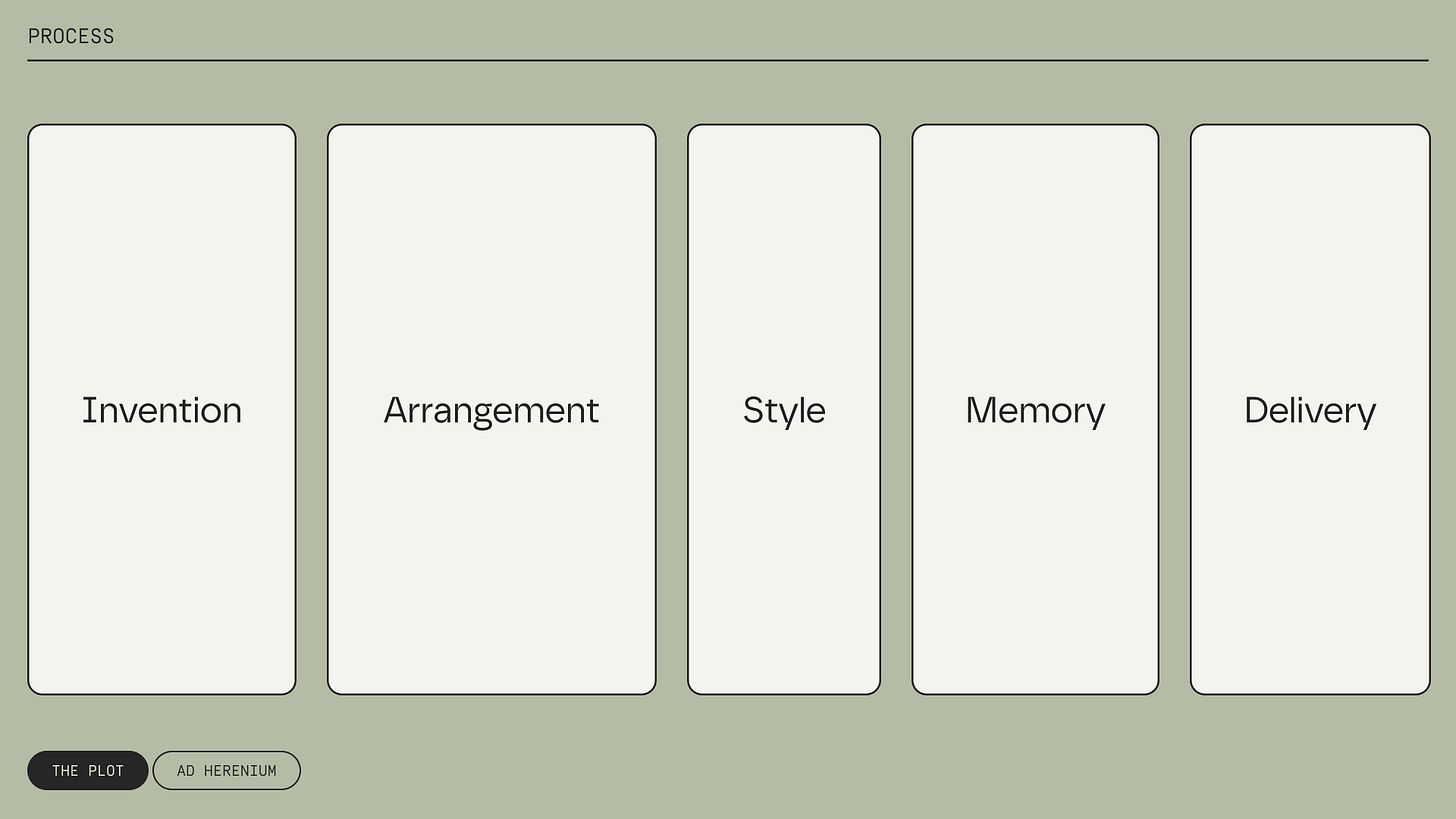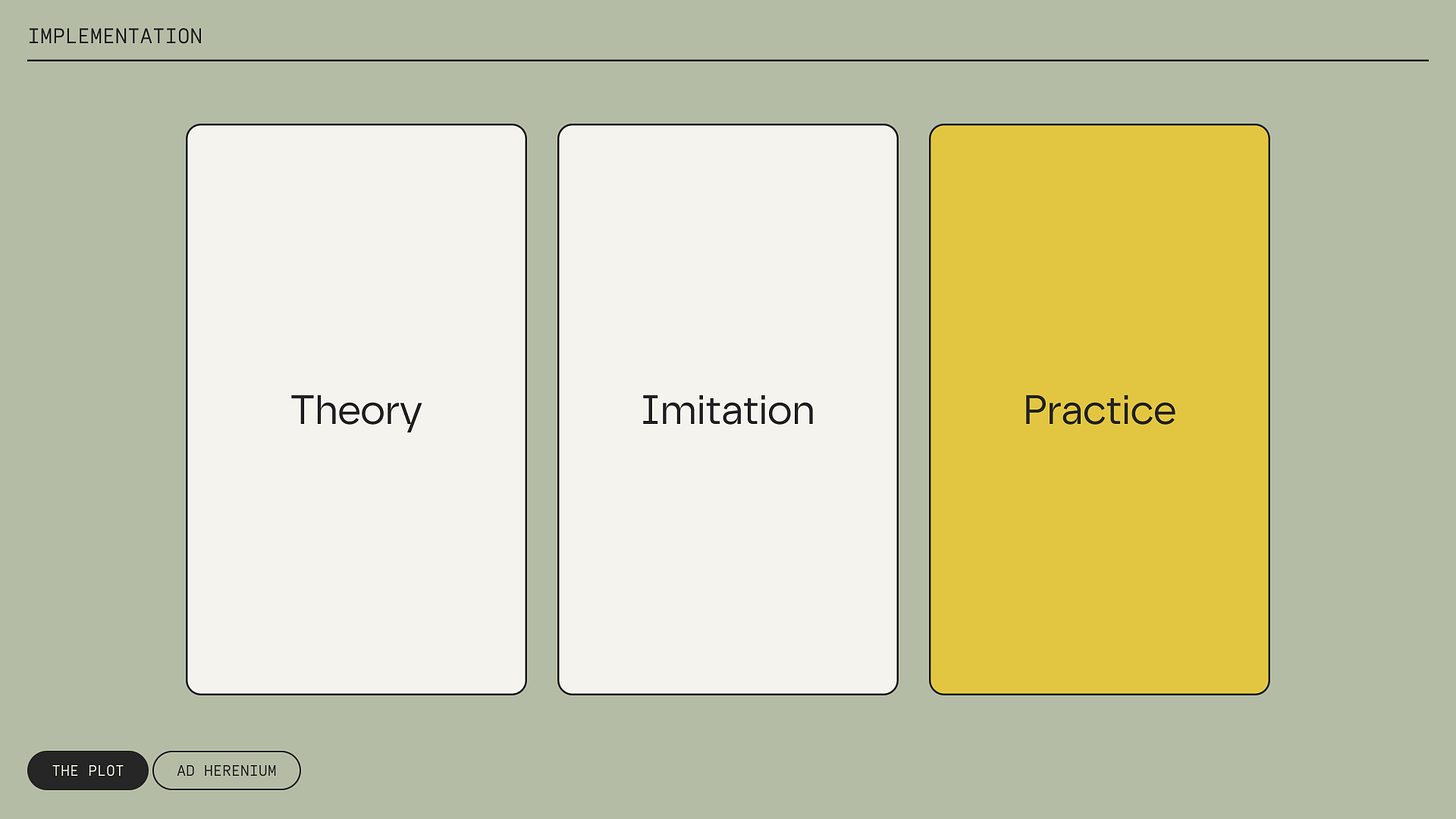Theory, imitation, practice
What a book written 2 millennia ago can teach us about our work
I fell in love with public speaking two decades ago. Its concepts taught me a way of thinking, structuring content and delivering it. And the beautiful thing about the art of rhetoric is how much it can teach us about other fields, too. Let’s take a closer look.
Ad Herennium is the oldest surviving Latin book on rhetoric. Historians aren't sure who wrote it—some say Cicero, others Cornificius—but its content is still incredibly relevant (more than 2,000 years later!). The book is built around the five principles of rhetoric.
Here’s how to think about them:
Invention: discovery of arguments and material for your speech
Arrangement: organisation and structure of your speech
Style: choosing the appropriate and effective language and rhetorical figures
Memory: techniques for memorising the content
Delivery: effective presentation of the speech, including voice control, gestures and facial expressions
Sounds familiar? With the exception of memory, these principles align almost surprisingly with the design process we use in our work. We first explore data and available content, then decide how to structure it, style it and finally communicate it. I've written about process on The Plot multiple times (in this and this article, for example), and even though we've grouped the steps for the studio, the core idea remains unchanged.
If you're reading this and already follow a similar process, you might not be impressed. I get it. What struck me when re-exploring Ad Herennium recently wasn't the structure itself but its suggested implementation. The author encourages practitioners to follow three techniques to develop their skills.
For us, that would mean:
Theory: understanding key principles and rules of data storytelling, providing the necessary foundation
Imitation: studying and emulating exemplary designers and storytellers
Practice: deliberate, consistent practice where theory and imitation become internalised
Do you recognise yourself in this? I surely see my own learning journey here. When I first started in data visualisation, I consumed dozens of books, articles and webinars. I also spent countless hours imitating others' work—not to publish as my own, of course, but to learn specific design techniques. And then I practised, practised, practised... and still do.
This framework works brilliantly not just for beginners but for all of us learning new skills (which never end in our line of work!). I’m currently exploring motion design, which requires studying a bit of theory and best practices, looking at examples and finally trying things on my own. And even with topics we've mastered, it's sometimes valuable to return from practice to theory to imitation, transforming this framework from Ad Herennium into a continuous learning loop.
So, what are you currently learning and how are you switching between these three modes?
—Evelina





❤️ congrats for another insightful piece! The memory part I would still consider it in the design process but from the perspective of creating a design that is memorable for the audience (to remember some data/numbers for example).